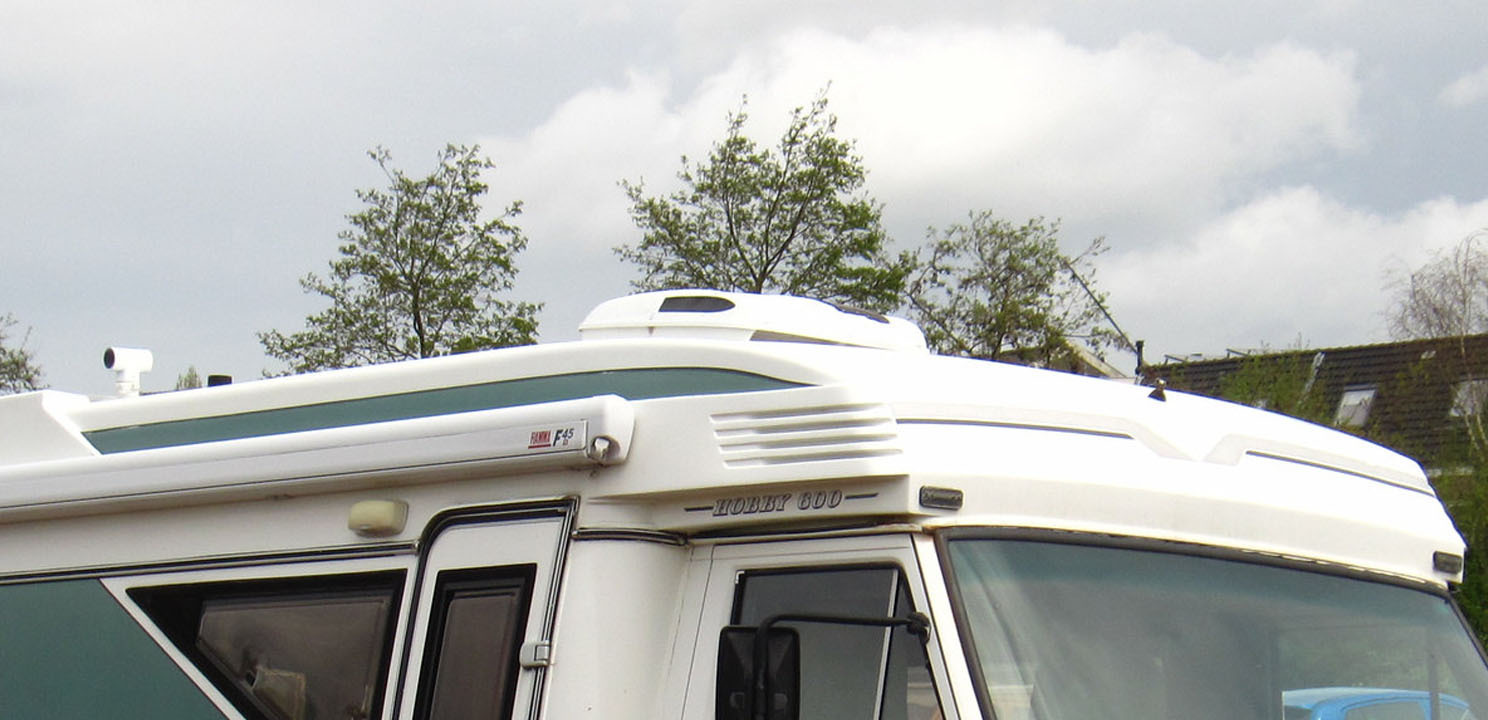RV Vent Covers: Everything You Need to Know
8th Nov 2024
Series 1, Episode 22


Vent covers for an RV may seem like a small component, but they play an important role in maintaining comfort and efficiency while protecting your vehicle from the elements. Whether you’re a weekend camper or a full-time RV dweller, investing in the right vent cover can improve ventilation, reduce energy costs, and extend your RV’s lifespan.
Explore the types of RV vent covers available, how to choose the right one , and essential tips for installation and maintenance.
Types of RV Vent Covers
Standard Vent Covers
The most common type of vent covers for recreational vehicles is simple, cost-effective, and provides essential protection against rain, dust, and debris. They’re ideal for general use but may not offer the specialized features that some RV owners need for extreme climates.
Aerodynamic Vent Covers
Designed for RV enthusiasts who travel frequently, these vent covers minimize drag and reduce noise while driving. They’re perfect for those seeking efficiency and quieter rides, especially when traveling long distances at higher speeds.
Solar-Powered Vent Covers
These covers take advantage of the sun’s energy to power small fans that improve airflow inside the RV. Solar-powered options are particularly useful for boondocking or dry camping, as they provide ventilation without draining the RV’s battery.
Insulated Vent Covers
For those who camp in colder climates, insulated vent covers for RVs help retain heat, minimizing drafts and reducing condensation. These covers are excellent for extending your camping season into winter or for traveling in areas with cooler temperatures.
Benefits of RV Vent Covers
Climate Control and Ventilation
RV vent covers allow for better airflow, which helps regulate temperature and prevent moisture buildup inside your RV. This is particularly important for keeping humidity in check, avoiding mold growth, and maintaining a comfortable living environment.
Energy Efficiency
By improving ventilation, certain types of vent covers, such as solar-powered or insulated models, help reduce energy costs by decreasing the load on your air conditioning and heating systems.
Protection from the Elements and Intruders
Vent covers protect your RV from rain, debris, and even harmful UV rays. This protection helps prevent water leaks and sun damage, ensuring your RV remains in good condition over a longer period.
High-quality vent covers can also offer an added layer of security by making it more difficult for intruders to tamper with your RV’s ventilation system.
Choosing the Right RV Vent Cover
Choosing the right RV vent cover involves considering your RV type, climate, and budget.
For frequent travelers, aerodynamic covers help reduce drag, while insulated covers are better suited for stationary RV living or colder climates. Solar-powered covers excel in sunny regions, providing ventilation without draining your battery.
Although budget is a factor, investing in high-quality, durable vent covers will save you money over time by reducing maintenance and extending your RV's lifespan.
Different RV Vent Cover Materials
Vent covers come in various materials, each with unique advantages and drawbacks.
One of the most common materials, plastic vent covers for RVs are lightweight, affordable, and easy to install. However, they may not be as durable as other options, especially in harsh weather conditions, and can become brittle with prolonged UV exposure.
Metal covers for, usually made from aluminum or stainless steel, are highly durable and offer excellent weather resistance. They’re more expensive but are great for those needing extra protection in extreme environments.
Balancing the advantages of plastic and metal vent covers, fiberglass covers are strong, resistant to UV rays, and can withstand most weather conditions. However, they can be pricier than other options.
Best Materials for Specific Climates
● Hot, Sunny Regions: Fiberglass or UV-resistant plastic.
● Cold, Windy Areas: Insulated metal or fiberglass.
● Wet, Rainy Climates: Metal or well-sealed plastic to prevent leaks.
Installation Guide
Installing an RV or motorhome vent cover can be a DIY project with the right tools and a bit of patience.
Step-by-Step Process
- Collect tools such as screwdrivers, drill and sealant.
- Remove the old vent cover, if necessary.
- Align the new vent cover with the existing vent.
- Secure the cover using screws or fasteners provided with the kit.
- Apply sealant around the edges if needed to prevent leaks.
Make sure to check with your supplier regarding specific tools and steps that may be required.
Common Mistakes to Avoid
●Not aligning the vent cover properly, which can lead to leaks.
●Skipping the sealant, especially in areas prone to heavy rain.
Maintenance and Care
Proper maintenance is crucial to ensuring the longevity and effectiveness of your RV vent cover.
Cleaning Tips
●Clean your vent covers regularly with mild soap and water to prevent dirt buildup.
●Avoid using harsh chemicals that may damage the cover material, especially on plastic or fiberglass covers.
Regular Inspection
●Check for cracks, warping, or other signs of wear, especially after extreme weather.
●Ensure that the vent cover’s fasteners are secure and free from rust.
●If you notice cracks, persistent leaks, or significant damage, it’s time to replace your vent cover. Regular inspections will help you catch these issues before they become bigger problems.
Seasonal Considerations for Vent Covers for RVs
When considering RV vent covers for different seasons, focus on ventilation during summer to reduce heat and humidity, with solar-powered or UV-resistant options offering optimal performance.
In winter, insulated vent covers help retain heat and prevent condensation. For the fluctuating temperatures of spring and fall, choose versatile covers that balance insulation with airflow.
Conclusion
Investing in the right vent cover for your RV is a simple yet effective way to enhance your RV experience. By selecting a cover that suits your climate, budget, and needs, you’ll improve your vehicle’s energy efficiency, protect it from the elements, and enjoy a more comfortable living space. Whether you’re a seasoned traveler or new to RV life, a quality vent cover is an essential upgrade that will pay dividends in both comfort and cost savings.
